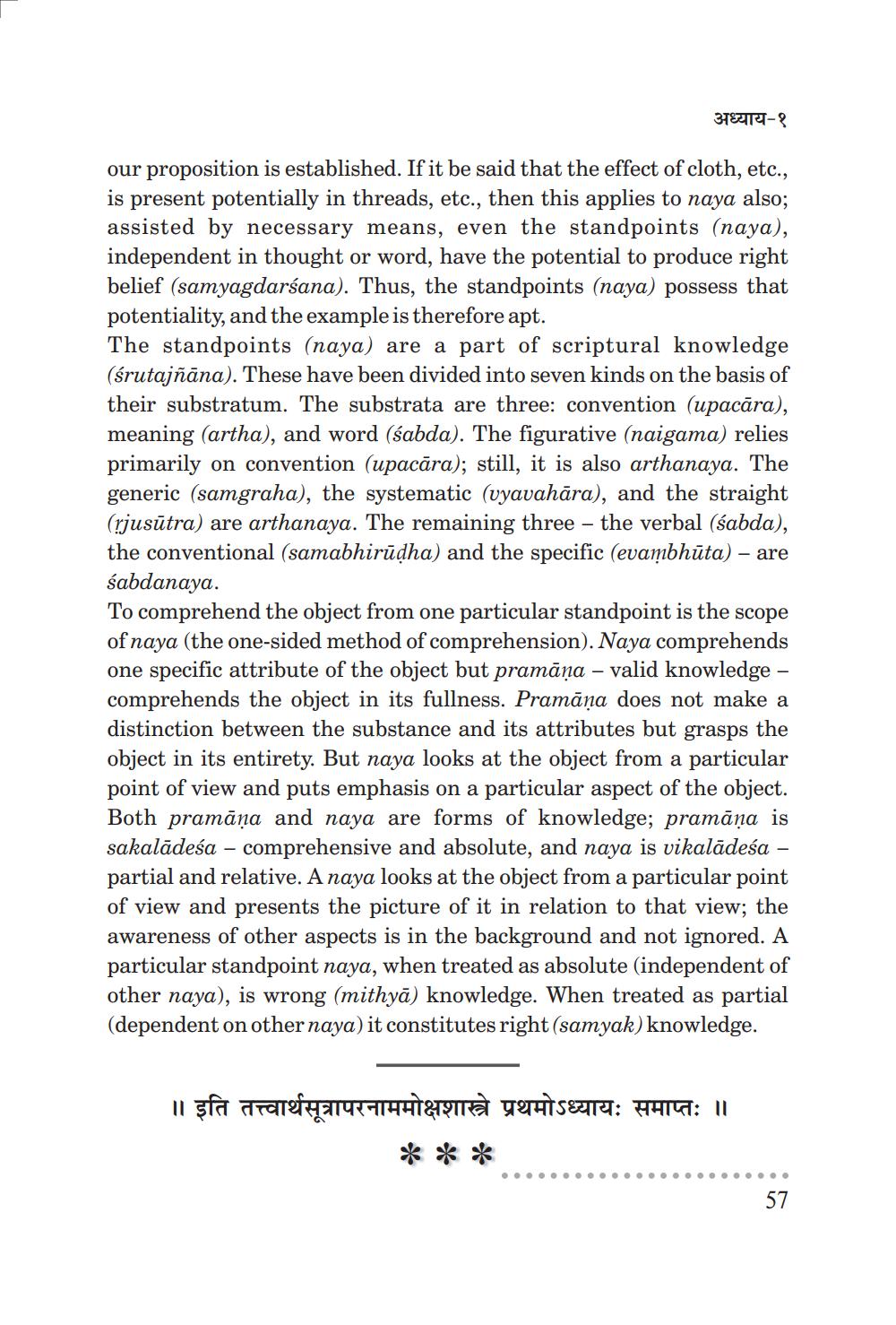________________
अध्याय-१
our proposition is established. If it be said that the effect of cloth, etc., is present potentially in threads, etc., then this applies to naya also; assisted by necessary means, even the standpoints (naya), independent in thought or word, have the potential to produce right belief (samyagdarśana). Thus, the standpoints (naya) possess that potentiality, and the example is therefore apt. The standpoints (naya) are a part of scriptural knowledge (śrutajñāna). These have been divided into seven kinds on the basis of their substratum. The substrata are three: convention (upacara), meaning (artha), and word (sabda). The figurative (naigama) relies primarily on convention (upacāra); still, it is also arthanaya. The generic (samgraha), the systematic (vyavahāra), and the straight (rjusūtra) are arthanaya. The remaining three – the verbal (sabda), the conventional (samabhirūdha) and the specific (evambhūta) - are śabdanaya. To comprehend the object from one particular standpoint is the scope of naya (the one-sided method of comprehension). Naya comprehends one specific attribute of the object but pramāņa - valid knowledge - comprehends the object in its fullness. Pramāna does not make a distinction between the substance and its attributes but grasps the object in its entirety. But naya looks at the object from a particular point of view and puts emphasis on a particular aspect of the object. Both pramāņa and naya are forms of knowledge; pramāņa is sakalādeśa – comprehensive and absolute, and naya is vikalādesa - partial and relative. Anaya looks at the object from a particular point of view and presents the picture of it in relation to that view; the awareness of other aspects is in the background and not ignored. A particular standpoint naya, when treated as absolute (independent of other naya), is wrong (mithyā) knowledge. When treated as partial (dependent on other naya) it constitutes right (samyak) knowledge.
॥ इति तत्त्वार्थसूत्रापरनाममोक्षशास्त्रे प्रथमोऽध्यायः समाप्तः ॥
.
.
.
.
.
.
.
.
.
.
.
.
.
.
.
.
.
.
57




